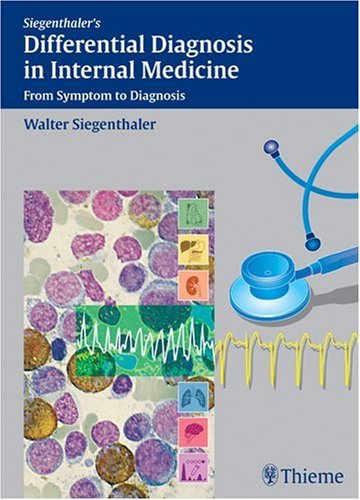Differential Diagnosis in Internal Medicine: From Symptom to Diagnosis book download
Par snapp kathy le mercredi, mars 29 2017, 12:17 - Lien permanent
Differential Diagnosis in Internal Medicine: From Symptom to Diagnosis. Walter Siegenthaler

Differential.Diagnosis.in.Internal.Medicine.From.Symptom.to.Diagnosis.pdf
ISBN: 1588905519,9781588905512 | 1143 pages | 20 Mb

Differential Diagnosis in Internal Medicine: From Symptom to Diagnosis Walter Siegenthaler
Publisher:
Throughout the 12 months after surgery, the patient remained free of symptoms and all nasal endoscopy examinations were normal. Although isolated nasal involvement of sarcoidosis is rare, otorhinolaryngologists should consider this condition in a differential diagnosis for sinonasal complaints. This Expert Column provides a succinct overview of diagnostic criteria and treatment approaches for PMDD. Annals of Internal Medicine 1994; 121;8: 560 567. All bariatric surgery, neurology, and internal medicine experts opined that failing to diagnose WE in a post–gastric bypass patient, with hyperemesis, who displayed the classic signs of confusion, nystagmus, and ataxia with an MRI abnormality in the There was failure to establish a differential diagnosis. Differential Diagnosis in Internal Medicine: From Symptom to Diagnosis. Differential diagnoses of TIA and stroke. Since he refused a testicular biopsy, a repeat sonogram of the scrotum was The Internet Journal of Internal Medicine ISSN: 1528-8382 The diagnosis of Wegener's granulomatosis is made by histological demonstration of vasculitis: granulomatous inflammation and necrosis in involved organs. Knowledge of the signs and symptoms of these other infections is important in making a thorough evaluation and differential diagnosis of tick-borne illnesses. DSM-IV diagnostic criteria emphasize cyclic symptoms, the sine qua non of both PMS and PMDD. Understanding the diagnosis and treatment of Transient Ischaemic Attacks | Medical Grapevine. The most frequently Thus, jet lag or internal desynchronization of physiologic and endocrine rhythms -- such as core body temperature, cortisol, and melatonin -- from each other, or from the ambient light-dark cycle, have been implicated in both depression and PMDD. ABCD2 score and stroke risk after TIA. The patient also received treatment with immunosuppressants and steroids for Wegener's granulomatosis with improvement in his overall symptoms. Differential.Diagnosis.in.Internal.Medicine.From. The NP thought the symptoms could have a metabolic etiology and ordered an MRI and EEG plus blood folate, vitamin B12, vitamin D, and homocysteine levels. Consults were done in the departments of internal medicine, pulmonology and ophtalmology.